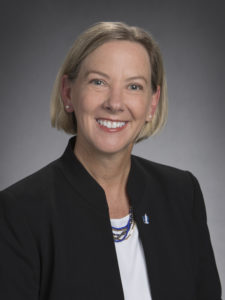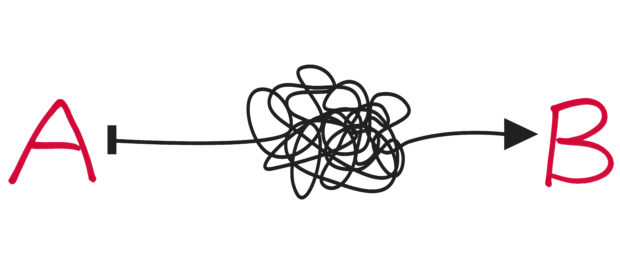There’s two ways for an insurance company to boost profits. The first option is to price products higher, and the second is to reduce operating expenses. Option No. 1 can be a dicey proposition, as it can mean a decline in market share. That leaves option No. 2.
Executive Summary
Process optimization is a strategic imperative in the industry—or at least it is for five carriers interviewed by Journalist Russ Banham. Here, he asks leaders of each carrier to describe a single process across the insurance value chain that is being made more efficient, less labor-intensive and less costly at their companies.Virtually every insurance company is leveraging digital technologies to optimize legacy business processes, making them more efficient, less labor-intensive and less costly. Across the insurance value chain—from underwriting and pricing to claims management, client onboarding, and dealings with brokers and agents—carriers are leveraging data analytics, machine learning, robotic process automation (RPA) and other digital technologies to make work more efficient and productive, driving down operating expenses.
About time, too. “The industry’s processes have been antiquated for many years, by virtue of the fact that carriers historically made money irrespective of their claims, thanks to invested assets that generated significant income,” said Kaenan Hertz, managing partner at Insurtech Advisors. “Insurers were shielded from actually having to become efficient. A combined ratio of 103 didn’t matter much because the carrier was earning a seven-point investment return.”
In today’s near-zero interest rate environment, the robust investment yields of yesteryear are elusive. Consequently, “every insurer must optimize their processes to make them more efficient,” Hertz said, “reducing their operating expenses to maximize profits.”
Interviews with five carriers—a mix of very large insurers, midsize regionals and a single-state workers compensation insurer—affirmed that process optimization is a strategic imperative in the industry. For editorial space considerations, we asked each carrier to describe a single process across the insurance value chain that is being made more efficient, less labor-intensive and less costly. Here are their stories.
The Crux of Insurance
For every insurance company, underwriting—the process of evaluating risks and determining a fair price for the coverages provided—is as old as the industry itself. “It’s really the crux of insurance,” said Chubb Executive Vice President, Chief Digital Officer and Chief Risk Officer Sean Ringsted.

“Using technology tools, underwriters can capture if the business is located in a catastrophe-prone zone, an area with high-crime rates or a sleepy village outside Des Moines.”
Sean Ringsted, Chubb
The problem with underwriting processes is their resistance to change over the centuries. Traditional underwriting entails an underwriter physically trying to identify facts relevant to a potential customer’s risks and comparing them to the carrier’s underwriting guidelines. “For the most part, carriers rely on brokers, agents and customers to provide the information needed to take on the risk,” said Ringsted. “This results in multiple back-and-forth communications, phone calls, emails and faxes between these parties and the underwriters.”
“We often refer to our new underwriting process as ‘2Q’ or ‘two question underwriting,'” Ringsted said. “It’s still an aspirational goal to get down to just two questions (name and address), but ultimately it’s driving the simplification we are working to achieve for our clients,” he noted.
Chubb believes that inefficient back-and-forth between carriers, agents and customers consume undue time and effort.They can also fail to capture all the available risk information pertinent to the customer’s insurance needs. Ringsted provided the example of a small business like a restaurant. While a wide range of information from external publicly available sources exists on the company, this data in the past could not be easily accessed by an agent or broker. Consequently, underwriters need to solicit this information from the agent, broker or insurance prospect, prolonging the underwriting process and making the insurance application process unpleasant for the business owner.
Technology has provided the means to overcome these impediments. “Much of the data needed to underwrite a restaurant can be found online,” said Ringsted. “Using technology tools, underwriters can capture where the business is located, when the building was built, the materials it is made from, the age of the roof, and if it’s located in a catastrophe-prone zone, an area with high crime rates or a sleepy village outside Des Moines. Other risk exposures also can be easily accessed, like whether or not it has a liquor license, how late it stays open and its proximity to a college campus.”
Having instant access to this data shortens the overall underwriting process, allowing underwriters to ask fewer questions of agents, brokers and customer prospects. For smaller accounts, technology has streamlined the underwriting process to the point where scant information is needed from these constituents. Larger and more complex accounts require more physical underwriting interactions, intuition and experience, Ringsted said. But even in these circumstances, productivity has increased. “Our underwriters are able to devote more of their time to risk segmentation and our portfolio strategy,” he explained.
The evolution of Chubb’s underwriting process goes beyond accessing online data, he confirmed. “The use of data analytics and machine learning enable straight-through processing and reduction of cycle times. As a result, we can now automate the simple tasks, allowing our underwriters to focus on the more complex, customer-facing needs. This improves the customer experience at the point of sale but also allows our underwriters to spend their time on higher-value, portfolio-level activities as well as marketplace trends and specific segment analysis.”
“Additionally, technology such as telematics, wearables, building and environmental sensors are also helping to make the exposure assessment explicit, rather than [being] inferred by an underwriter from customer loss history or other methods.”
RPA Proof of Concept
Midsize regional insurer Penn National also wanted to optimize traditional processes but was concerned about making a significant investment right off the bat, said Britta Schatz, the Harrisburg, Pa.-based insurer’s chief information officer. “Although we were extremely excited about using RPA to automate our processes, we took a slower approach, running with a ‘proof of concept’ first to establish the business case,” she explained.

“A large carrier might save the work of 10 staff members by automating [a process], whereas we don’t have 10 people here doing any one thing.”
Britta Schatz, Penn National
This pilot project entailed licensing RPA on a Software-as-a-Service subscription basis, which would be less expensive than buying an on-premise RPA solution. The goal was to explore the use of RPA to automate one process and then determine if the tool could be used to optimize other processes. “As a midsize carrier, we don’t have the opportunity to achieve the same economies of scale as a much larger insurer,” Schatz explained. “A large carrier might save the work of 10 staff members by automating [a process], whereas we don’t have 10 people here doing any one thing.”
The proof of concept launched in 2018 with a series of workshops to determine which processes would benefit the most from automation. Ultimately, it was decided that personal lines policy processing presented the most opportunity, as it would positively affect the customer experience, shortening the turnaround time. “At the time, it took us about 10-plus days to process a policy,” said Schatz. “Using RPA, we got that down to a single day.”
Although the impetus for using RPA was to improve customer experience and not necessarily decrease staff members, Penn National was able to significantly reduce the volume of temporary workers performing low-priority administrative tasks like adding an additional insured to a personal lines policy. “We were able to see immediate benefits and in less than a year had made a payback on the investment,” Schatz said.
The proof of concept proved its merit, compelling Penn National to invest in an on-premise RPA solution for personal lines policy processing in late-2019. Schatz said, “The results have been so favorable that we’re looking to extend the applicability of RPA across all other processes in our value chain.”
Personalizing the Claims Experience
Like Penn National, Erie Insurance Group, a provider of automobile, homeowners and business insurance policies in a dozen states and Washington D.C., is hunting for ways to automate customary processes to provide a better customer experience. In evaluating the company’s value chain to do it, it was determined that the carrier’s claims processes needed an overhaul to enhance the personal relationship between the company, agents and claimants.

“The magic in claims management is the human touch, not the process or the technology.”
Bob Ingram, Erie Insurance
“The magic in claims management is the human touch, not the process or the technology,” said Bob Ingram, Erie Insurance’s executive vice president and chief information officer. “We make a promise to a policyholder and the claim is that promise fulfilled. Since the agent is the person who makes this promise on our behalf, we feel that claims processing should be a highly personal experience.”
That’s not the case for many claimants, who endure voluminous paperwork, a barrage of questions from claims adjusters, and uncertainties over the size of the claims payment and when it will be received. The reason for the drawbacks is the antiquated nature of claims processing. “What often happens is that claims information is sent to the agent but not to us, or to us but not to the agent,” Ingram explained.
To reduce this back-and-forth cycle time, Erie recently launched a pilot project streamlining the traditional “first notice of loss” process. The new platform will roll out in phases in 2020. “We’ve designed a platform where all three constituents are engaged simultaneously with the most current claims information,” said Ingram.
In this ecosystem, information needed to move the claim from the first-notice-of-loss stage through the remainder of the process is collected and made transparent to the three parties. Ingram said a “distinctive user experience” is provided to the parties on a desktop computer or mobile device. At present, the claims platform is confined to personal lines business, but Ingram said plans are underway to apply the solution to small commercial lines.
Icing on the Cake
Like every business, small “mom and pop” shops with a handful of employees must abide by state laws and purchase workers compensation insurance. These smallest of small companies typically endure time-consuming policy application processes that interfere with running the business. Cake Insure, a digital provider of workers compensation insurance in Colorado, was created to ease their duress.

“Once a business owner describes in plain English the nature of the company’s work, the machine learning algorithm kicks into gear to fill in the relevant classification codes.”
Rob Norris, Cake Insure
A subsidiary of Pinnacol Assurance, a Colorado-based workers compensation insurance carrier, Cake Insure is aimed at small businesses looking to buy a workers comp policy for the first time. Such companies generally go through independent agents who collect information on the phone or in person from the business owner, enter this data into an agency management system, and then send it out for a premium quote to any number of insurance carriers. “The back-and-forth processes between the carriers, the agent and the small business are cumbersome, to say the least,” said Rob Norris, CEO of Cake Insure.
The handoffs consume three to five days, start to finish, he said, with carriers posing a question to the agent, who passes on the query to the business owner, who responds back to the agent, who then provides the answer to the carrier. “That’s just the ‘typical’ experience; some cases take weeks for the client to jump through all the hoops,” Norris said. “These are the businesses truly struggling, [that] need the most handholding and want coverage instantly. The situation for them is terrible.”
The process isn’t much fun for carriers, either. “Underwriting and pricing decisions take up so much time, adding to expenses,” Norris said. “We thought there had to be a better way.”
Cake Insure is that way because Norris left his former role at Pinnacol to launch and lead the subsidiary, recruiting a staff of creative engineers recruited from other insurance startups. Although incorporated as a subsidiary, Norris described the company as an MGA for Pinnacol, one focused on very small commercial lines customers. (Read more about Cake Insure in a May 3, 2019 article written by Norris for Carrier Management, “Managing Innovation Using a Managing General Agent,” at http://carriermag.com/3abwc.)
“We’ve reimagined the entire process, from issuing the quote to binding the coverage,” Norris said. “Through our marketing group, we drive the prospect to a mobile-first Web platform designed to get everything signed, sealed and delivered in three to five minutes. Once they enter their credit card, the insurance is effective the following day and they receive a certificate of insurance on the spot.”
This fast-track process is attainable in part because of the shorter number of questions asked to buy the insurance. A typical workers compensation application contains as many as 70 questions, Norris said, many of them multiple choice and others requiring information to be written or keyed in by hand. Applicants often pause to look up the meaning of insurance-specific wording. Cake Insure has truncated this process to a dozen questions without the jargon—a pretty sizable feat given the highly regulated nature of workers compensation.
“Once a business owner describes in plain English the nature of the company’s work, the machine learning algorithm kicks into gear to fill in the relevant classification codes,” Norris said. “The next question that pops up is derived from the previous question, shortening the entire process. Once we provide a quote, there’s a lever they can use to increase or decrease coverage limits, which increases or decreases the premium.”
As easy as this appears, renewing the policy is even more of a breeze. “We’re seeing great results in our Net Promoter Score [a measurement of customer loyalty], which is hovering in the mid-70s,” Norris said, pointing out that Pinnacol’s NPS is in the mid-50 range. Down the line, larger small businesses also will be able to access workers compensation insurance from the company.
Doubling Down on Small Commercial
In 2015, Nationwide Mutual Insurance Company made the decision to invest in the growth of its commercial lines book of business. The large Columbus, Ohio-based insurer, a major provider of personal lines automobile and homeowners insurance, internally dubbed the ambitious multiyear, multimillion-dollar growth strategy “Commercial Lines Transformation,” underlining its importance.

“Our independent agents were frustrated. They’d call for clarification on something, and one underwriter said one thing and another underwriter said something else.”
Tammy Craig, Nationwide Mutual Insurance Company
“We’d always offered commercial lines, but it just didn’t get as much focus and investment over the years,” said Tammy Craig, Nationwide’s chief information officer. “We decided to care more about the business and doubled down.”
A crucial pillar in transforming commercial lines was the need to simplify the underwriting process, Craig said. “Pretty much every new piece of small and mid-market commercial business and even the renewals were physically touched by underwriters,” she explained. “We had a bit of automation with some underwriting rules, but that was about it. Our independent agents were frustrated. They’d call for clarification on something, and one underwriter said one thing and another underwriter said something else. There was little in the way of consistency.”
Over the course of the next four years, the entire commercial lines book of business transferred to a platform automating most but not all underwriting processes. “It marked a substantial improvement, but there was still too much business needing underwriting attention,” Craig said. “The good news is that we’re using machine learning to make more decisions on the underwriters’ behalf. This has had the effect of creating a new work culture.”
Nationwide is now embarking on the second phase of “Commercial Lines Transformation,” predicated on rapidly giving a small business owner during the first meeting with the agent a premium quote on all the commercial lines products the account requires. Using machine learning algorithms to access and analyze relevant internal and external data on the company, Nationwide expects to be able to accept or decline 85 percent of accounts in less than 30 minutes. The remainder would be referred to an underwriter for evaluation. “By applying a rules engine to each line of business, we can eliminate most of the questions typically asked to underwrite an account,” Craig said.
The machine learning module validates the account, runs a pricing model and then comes back with a quote, allowing the agent to bind the policy while the customer sits in the office. On the platform today in 32 states are five commercial lines products, with another three products expected to join them in 2020.
Ultimately, the strategy is expected to yield higher commercial lines profits, turning around the business as was planned back in 2015. “While small commercial isn’t as commoditized as personal lines, it’s getting there,” Craig said. “Spending a boatload of time processing isn’t good for anybody in the insurance value chain. Underwriters can focus on businesses that need their personalized attention while the rest is intelligently automated.”
These five carriers’ efforts to optimize legacy business processes are indicative of a sea change in the industry’s use of technology, commented Hertz from Insurtech Advisors. “The amount of money invested in InsurTech firms is now north of $4 billion, indicating just how behind the curve insurers were when it came to antiquated processes,” he said. “Carriers are finally realizing the competitive value of digitizing and streamlining their processes.”
Conversely, the insurers that stick to yesteryear’s processes and fail to embed automated processing solutions across the value chain will have less value to promote.





















 Global Warming Likely to Push Future Hurricane Seasons to Extremes: Study
Global Warming Likely to Push Future Hurricane Seasons to Extremes: Study  Legal Finance and Insurance: From Confusion to Collaboration
Legal Finance and Insurance: From Confusion to Collaboration  U.S. E&S Outlook No Longer Positive: AM Best
U.S. E&S Outlook No Longer Positive: AM Best  Police Recover Swallowed Fabergé Pendant 6 Days After it Was Stolen
Police Recover Swallowed Fabergé Pendant 6 Days After it Was Stolen 




